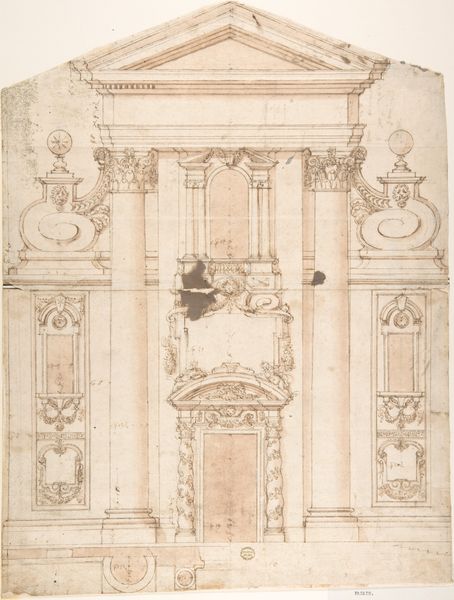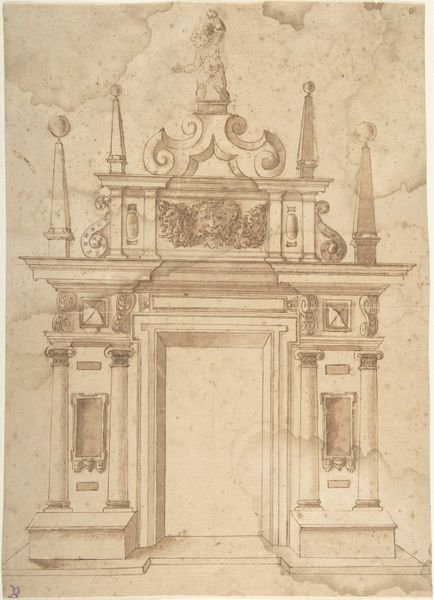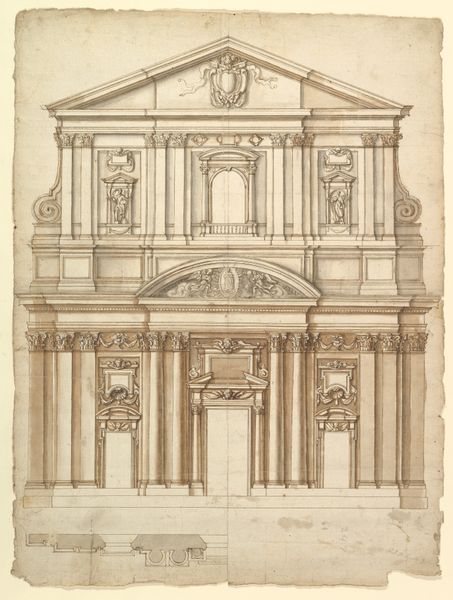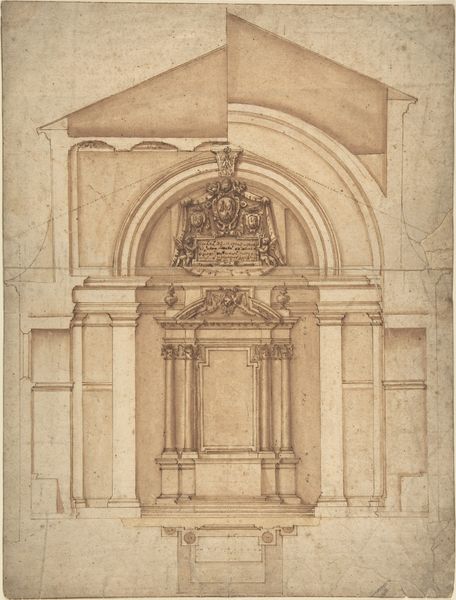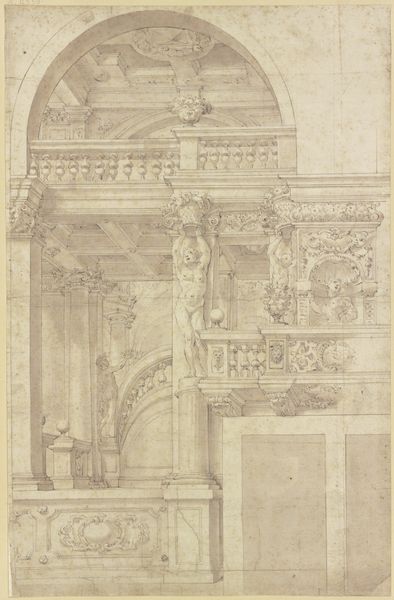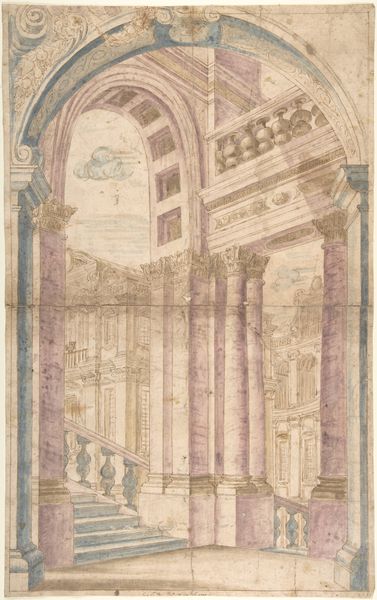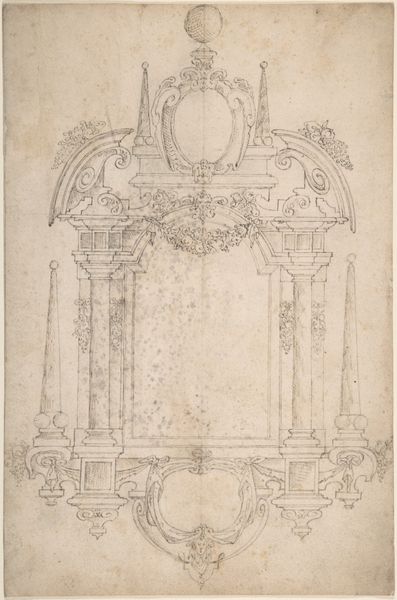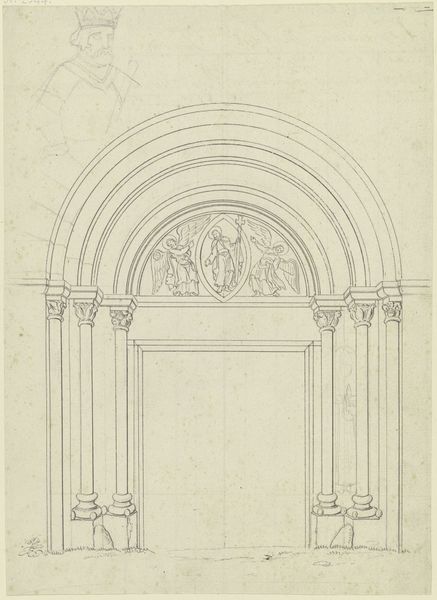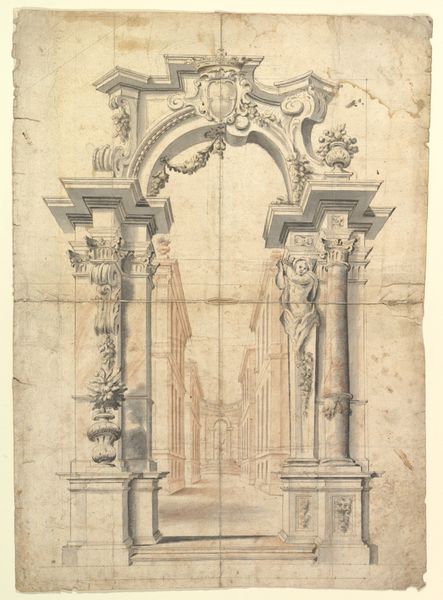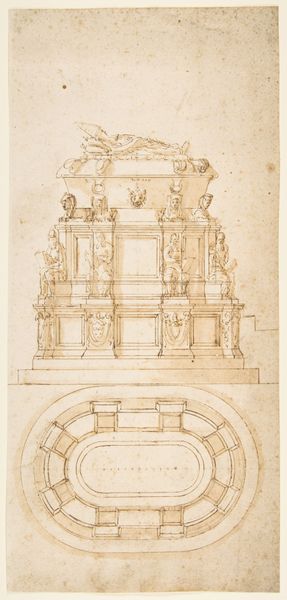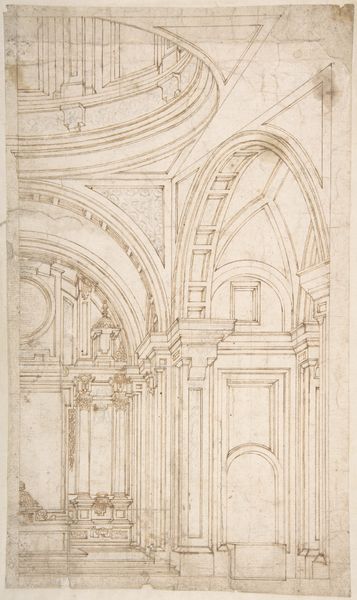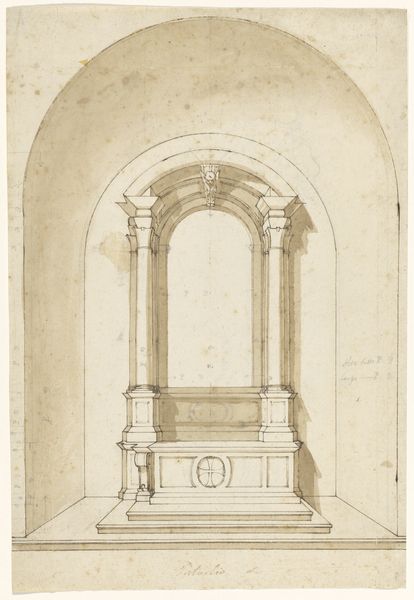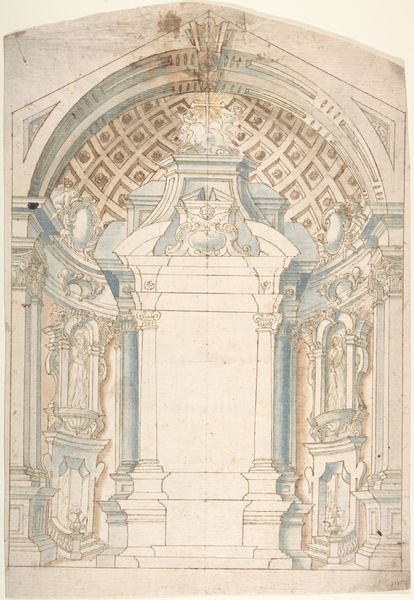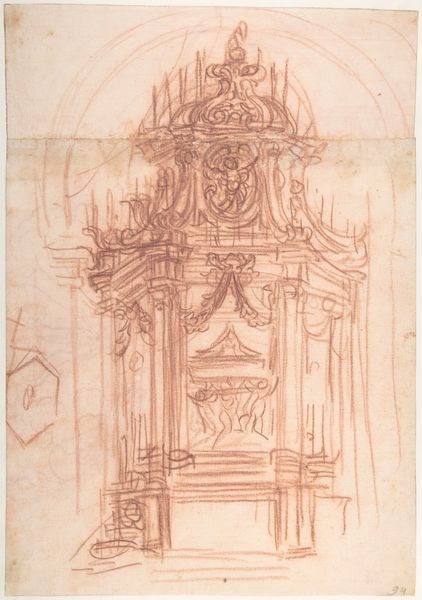
Design of architectural constructions ( fantasy) 1700 - 1780
0:00
0:00
drawing, print, etching, architecture
#
drawing
#
baroque
# print
#
etching
#
landscape
#
etching
#
perspective
#
form
#
column
#
line
#
architecture
Dimensions: 15-3/16 x 9-7/8 in. (38.6 x25.1 cm)
Copyright: Public Domain
Curator: Here we have a rather stunning piece, an etching on laid paper, entitled "Design of Architectural Constructions (Fantasy)." It's attributed to an anonymous artist and dates from between 1700 and 1780. You can find it here at the Metropolitan Museum of Art. Editor: My first impression? Claustrophobia in high style! It’s this incredibly detailed yet strangely confining space rendered in warm, sepia tones. Like a stage set for a dream I can't quite place. Curator: The Baroque style, as seen here, often reflects a world of power and complexity through intricate details. This fantasy construction embodies the tensions present during that era. The imposing columns and arches can evoke a sense of grandeur, but for whom was this grandeur intended? What social stratifications are inherent within architectural power? Editor: Right. I get what you mean about power. All those meticulously etched lines feel so controlled, like every shadow, every curve, had to conform. Makes you wonder about the role of imagination in such a rigid system. Did the artist feel trapped by those expectations, maybe injecting a little bit of surrealism to break free, if only on paper? Curator: Exactly! The "fantasy" in the title gives the artist a channel to subtly critique the status quo, using architecture to explore themes of control and confinement, possibly alluding to societal pressures or even religious restrictions prevalent during that period. We also have to acknowledge that anonymity is something of a loaded concept in this time frame; could this lack of identification point to marginalized identities whose stories are yet to be uncovered? Editor: I love that perspective! For me, it’s like peeking into an architect’s mind – a whirlwind of ambition, geometry, and a hint of beautiful madness. Thinking about societal pressures of that era is not something I would initially reflect upon without your perspective! Curator: These visual artifacts act as cultural mirrors that allow us to decode societal norms, struggles, and silent discourses. Approaching them intersectionally illuminates so much that has been obscured, expanding our knowledge about these important historical eras. Editor: Yes. It's wild how one simple image, born out of some long-gone imagination, can speak volumes if we really listen.
Comments
No comments
Be the first to comment and join the conversation on the ultimate creative platform.
